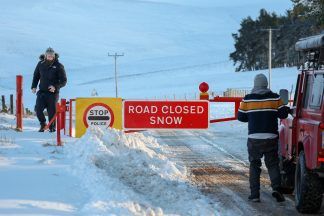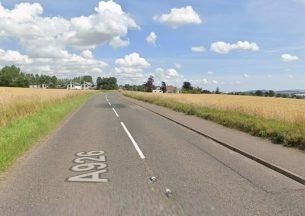An investigation is under way to establish the cause of a train derailment in Aberdeenshire that left three people dead.
It’s thought flooding may have been a contributing factor after Network Rail earlier warned of landslips in the area.
Landslips are a major issue for Britain’s railways, causing severe disruption and delayed trains.
They are often caused by long periods of heavy rain which makes the ground saturated with water.
This can lead to soil, rocks and earth becoming displaced and falling onto train tracks, making them unusable.
Aberdeenshire had been hit by heavy rain on Tuesday night and Wednesday morning.
Damage is assessed by Network Rail engineers before debris is removed from the track, as once a landslip has started further incidents are more likely.
Trackside slopes often need to be repaired, stabilised and strengthened.
This can involve installing drainage or steel rods, or even altering the profile of a slope.
Network Rail says it is reducing the impact of landslips by identifying which sites are at risk using helicopters equipped with laser imaging technology.
Once a location is deemed to be prone to landslips, motion sensors and CCTV is fitted to detect soil and rock movement.
These sensors send an alarm to signallers who can stop trains until the area has been inspected by engineers.
Network Rail says it also sends people and equipment to high-risk areas once flood warnings are issued.
Wednesday’s derailment, in which the train driver and conductor both died, was the first time in 13 years a passenger or member of staff has been killed in a crash in the UK.
The last time a passenger was killed was in February 2007 when one woman died and 89 other people were injured after a Virgin Trains service derailed at 95mph in Cumbria.
The 300-tonne Pendolino train from London to Glasgow came off the tracks due to a badly maintained and faulty set of points.
Network Rail, the firm responsible for the upkeep of the railways, accepted it was at fault and was fined £4m over safety failures.
The last time a train driver was killed in a crash was at Ufton Nervet, Berkshire, in November 2004.
A total of seven people died in the incident.
In the 1980s and 1990s fatal crashes on Britain’s rail network occurred almost every year.
Thirty-five people were killed and 415 others were injured when three trains collided near Clapham Junction station in south London in December 1988.
Follow STV News on WhatsApp
Scan the QR code on your mobile device for all the latest news from around the country






























